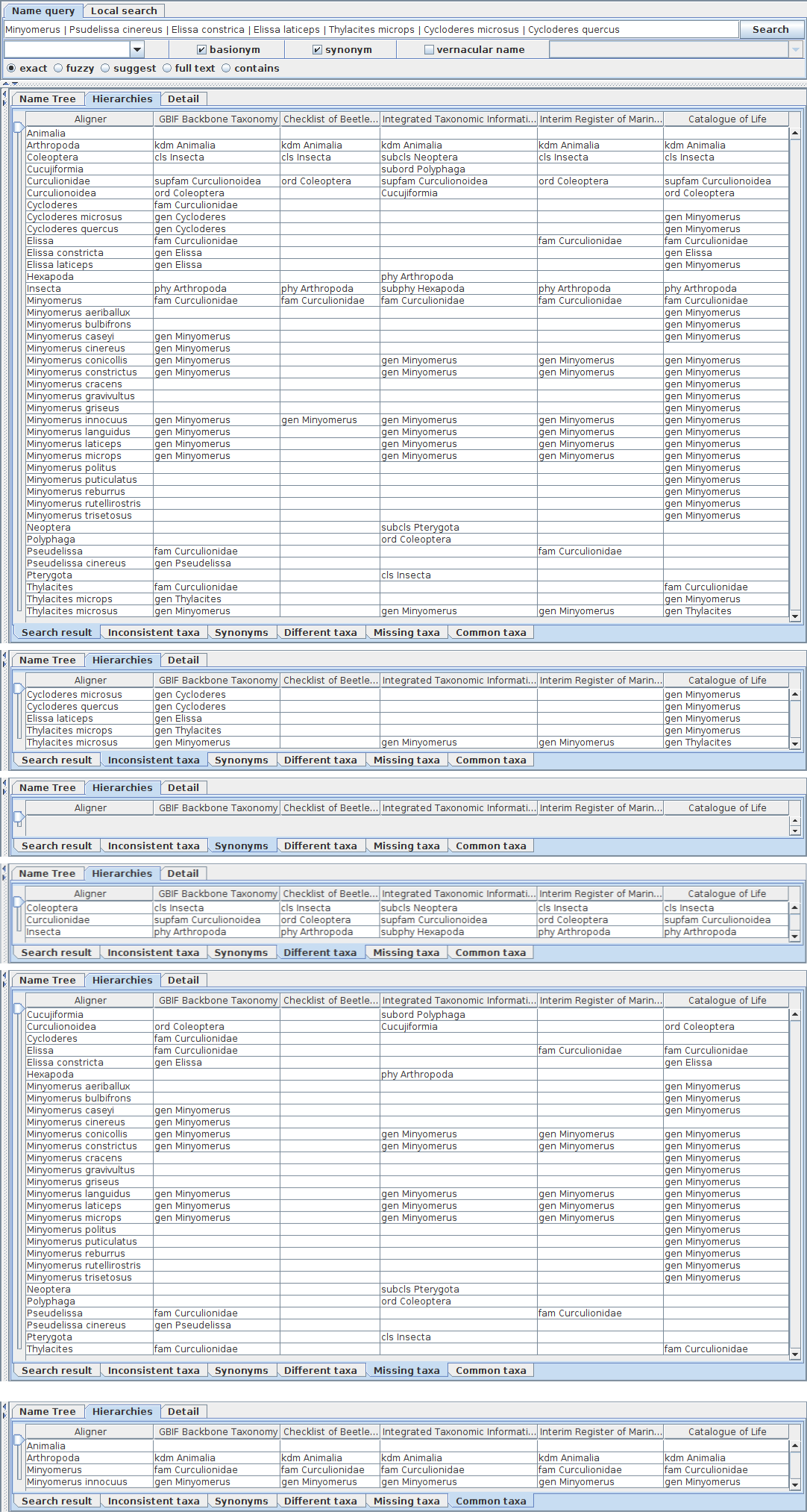| |
Facets of assignments to higher name usages are shown in assignment tables with tabs of facet names where the word 'taxa' is used for 'name usages' to save screen space. Five hierarchies obtained by the union query are the same as in Fig. 6, are shown in both tree diagrams and assignment table where a row represents assignments of name usages having the name literal in the aligner column to higher name usages in hierarchies, although tree diagrams are minimised in the figure for clarity. Assignments are categorised into facets which can be switched by selecting tabs at bottom of the table. Note that names in table cells of hierarchies represent higher name usages to which the name literal of the row is assigned, but not name usages of the name literal. Rows are ordered by the name literal alphabetically for easier looking up. The table of 'Search result' tab shows distribution of all assignments of name usages. The literal of name usages at the root of hierarchies, i.e. Animalia in this case, is shown without higher name in any hierarchy. The table of 'Inconsistent taxa' tab shows inconsistent name usage as different higher names of the same lower literal. It does not contain, however, assignments that differ only in intermediate name usages, which can be embedded into the other assignment. Such higher-name-path conformal assignments are categorised into the table of 'Different taxa' tab which shows compatible but somewhat different assignments. The synonyms tab would cover synonyms between hierarchies, rather than synonyms given in each hierarchy, remains to be implemented. The table of 'Missing taxa' shows name usages that appear in some, but not all, hierarchies without inconsistency. A vacant cell indicates that the name literal does not appear in the hierarchy. The table of 'Common taxa' shows name usages that shares both its literal and higher literal in all hierarchies.
|
|

